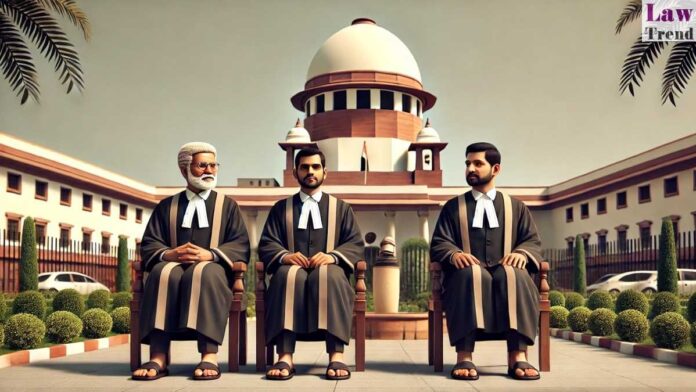In a significant move toward transparency, the Supreme Court of India has publicly outlined the comprehensive, multi-layered procedure followed in the appointment of Judges to the Supreme Court and High Courts. The information, published on the Court’s official website, details the institutional protocols, consultations, and criteria considered at various stages of the appointment process for both the Chief Justice and puisne Judges.
I. Appointment of the Chief Justice of India
- Initiation by Law Ministry
At least one month before the retirement of the incumbent Chief Justice of India (CJI), the Union Law Minister seeks the recommendation of the outgoing CJI. - Seniority Principle
The senior-most Judge of the Supreme Court is generally recommended as the next CJI, provided they are deemed fit for the post. - Consultation in Case of Doubt
If any concern arises regarding the fitness of the senior-most Judge, the CJI consults other Supreme Court Judges as per Article 124(2) of the Constitution. - Final Approval
The recommendation is forwarded to the Prime Minister, who advises the President to formally appoint the CJI.
II. Appointment of Judges to the Supreme Court
- Supreme Court Collegium Formation
The Supreme Court Collegium comprises the CJI and the four senior-most Judges. If the incoming CJI is not part of the four senior-most Judges, he is included in the Collegium. - Eligibility
Recommendations may be made for:
- Chief Justices or Judges of High Courts,
- Eminent members of the Bar, or
- Distinguished jurists.
- Chief Justices or Judges of High Courts,
- Key Evaluation Factors
- Inter se seniority among High Court Judges.
- Disposition rate and quality of judgments.
- Integrity and merit.
- Fair representation to all High Courts.
- Inter se seniority among High Court Judges.
- Consultation
The Collegium consults the senior-most Judge in the Supreme Court from the same High Court as the candidate. If unavailable or uninformed, other Supreme Court Judges with relevant experience are consulted. - Government Process
Once a name is finalised:
- The Law Minister forwards it to the Prime Minister,
- Who in turn advises the President,
- Who issues the formal notification of appointment.
- The Law Minister forwards it to the Prime Minister,
III. Appointment of High Court Judges
Step 1: Initiation by High Court Collegium
- The proposal is initiated by the High Court Collegium comprising the Chief Justice and two senior-most Judges.
- For Advocates:
- Considerations include age (45-55 years), income tax returns, net professional income (₹7 lakh/year minimum for 5 years), pro-bono work, and court performance.
- Considerations include age (45-55 years), income tax returns, net professional income (₹7 lakh/year minimum for 5 years), pro-bono work, and court performance.
- For Judicial Officers:
- Must be under 58.5 years on the date of vacancy.
- Inter se seniority, Annual Confidential Reports (ACRs), and judgment evaluations are crucial.
- Must be under 58.5 years on the date of vacancy.
Step 2: Consultation and Documentation

- The High Court Collegium consults other Judges and members of the Bar.
- Candidates may be called for personal interaction.
- Supporting documents include:
- Bio-data,
- Chartered Accountant certificates (for Advocates),
- Reported/unreported judgments,
- Undertakings if relatives are practising in the same court.
- Bio-data,
Step 3: Role of State Government
- The Chief Justice of the High Court sends the proposal to the Chief Minister.
- Simultaneously, advance copies go to the Governor, Union Law Minister, and the Chief Justice of India.
- The CM forwards the proposal to the Governor, who in turn sends it to the Law Minister.
Step 4: Evaluation by Supreme Court Collegium
- The Supreme Court Collegium independently verifies credentials, interacts with candidates, and consults relevant Supreme Court Judges.
- Complaints and representations are also taken into account.
- Merit, integrity, seniority, and judicial conduct are central to the Collegium’s assessment.
Step 5: Final Decision by Union Government
- The Union Government may return a recommendation for reconsideration citing public interest or national security.
- If the Collegium reiterates its recommendation, it is binding on the Government.
- The Law Minister then forwards the name to the Prime Minister, who advises the President.
Step 6: Appointment Notification
- Upon the President’s approval:
- A gazette notification is issued by the Department of Justice.
- The appointee must submit a medical certificate and proof of date of birth before the notification.
- A gazette notification is issued by the Department of Justice.
The process to appoint Judges in India involves multiple levels of scrutiny, consultation, and independent verification, ensuring a balance between executive inputs and judicial independence. The publication of these detailed procedures by the Supreme Court marks a crucial step in institutional transparency and accountability.







